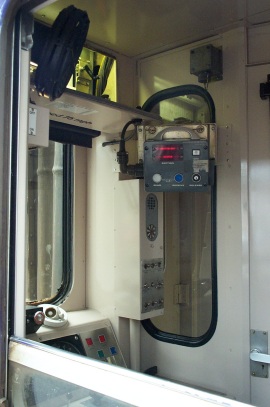RETB Signalling - 156 Super-Sprinter |
Radio Electronic Token Block signalling (RETB) was introduced by British Rail in the 1980s as way of reducing the cost of operation on long, but lightly used branch lines.
A description of how RETB signalling works can be found on the Signalbox web site.
Class 156 units have operated over all the routes controlled by RETB signalling:
 |
To work over RETB signalled lines, trains must be equiped with a Radio (which all mainline traction units now have) and a Cab Display Unit (CDU), which the driver uses to receive and return the electronic tokens. The CDUs are portable and can be plugged in to any cab fitted with the necessary bracket and data connection. On the Cambrian Lines, the CDU is plugged in by the driver prior to departure. Fifteen First ScotRail units are permanently fitted with a CDU in each cab for operation on the West Highland Line. Class 156s have recently been reintroduced to the East Suffolk line, after a gap of 11 years. All one railway units based at Norwich Crown Point are permanently fitted with a CDU in each cab. This view of 156.474's cab shows the RETB Cab Display Unit (CDU) prominently on the right of the windscreen. |
| one railway - RETB fitted | 9 units | Jan 2006 |
| 156.402,407,409,412,416,417,418,419,422 | ||
| First ScotRail - RETB fitted | 15 units | March 2006 |
| 156.446,447,450,453,457,458,465,474,476,478,485,492,493,496,499 | ||